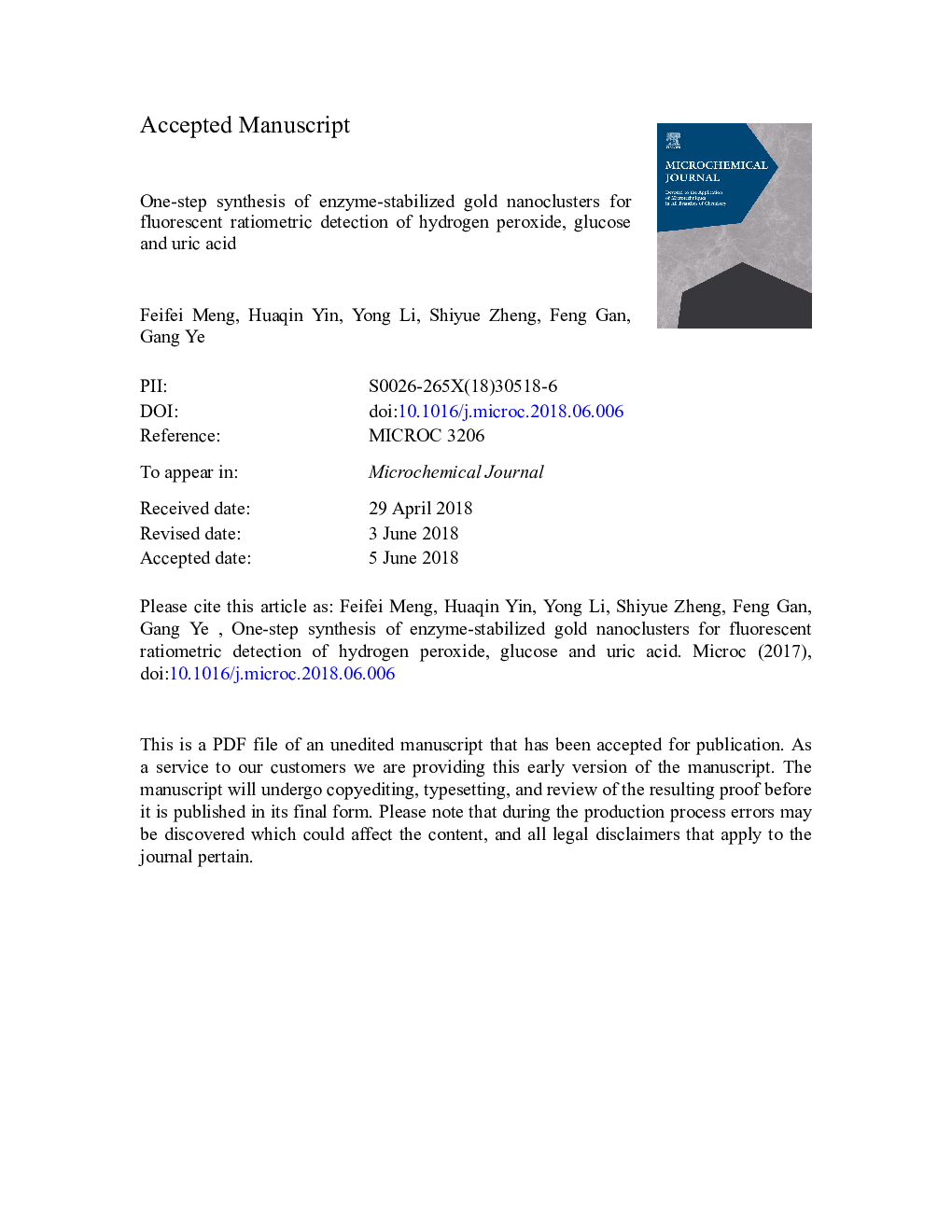| Article ID | Journal | Published Year | Pages | File Type |
|---|---|---|---|---|
| 7640452 | Microchemical Journal | 2018 | 18 Pages |
Abstract
This paper reports a novel enzyme-functionalized gold nanocluster with dual emission characteristics. We applied the reductivity of tyrosine residues in catalase to reduce gold ions so as to fabricate catalase conjugated gold nanoclusters (CAT-GNCs) under strong alkaline conditions. The whole synthetic process only took 15â¯min. We observed the fluorescence of CAT-GNCs can be rapidly quenched by hydrogen peroxide, which indicates that the activity of catalase was not severely affected although it was used as reductant in the synthesis of the CAT-GNCs. The CAT-GNCs were used as a ratiometric fluorescence sensor to detect H2O2, and the linear range was 10-80â¯Î¼M (R2â¯=â¯0.9939). The detection limit was as low as 25â¯nM. The CAT-GNCs were also used to determine the glucose and uric acid, with the linear ranges of 5-500â¯Î¼M (R2â¯=â¯0.9938) and 10-200â¯Î¼M (R2â¯=â¯0.9910), respectively; and the detection limits of 3â¯Î¼M and 40â¯nM, respectively. Finally, the CAT-GNCs were used in real serum samples, the recovery rates of the glucose and UA were >86.37% and 86.90%, respectively. The results demonstrated that the CAT-GNCs have the potential for use.
Related Topics
Physical Sciences and Engineering
Chemistry
Analytical Chemistry
Authors
Feifei Meng, Huaqin Yin, Yong Li, Shiyue Zheng, Feng Gan, Gang Ye,
